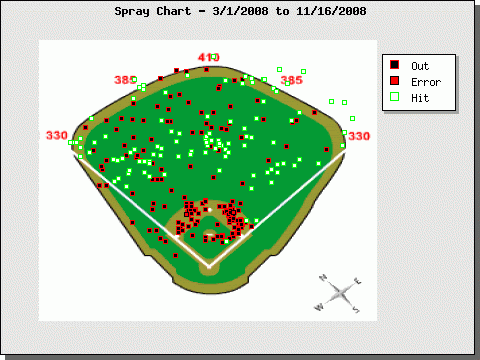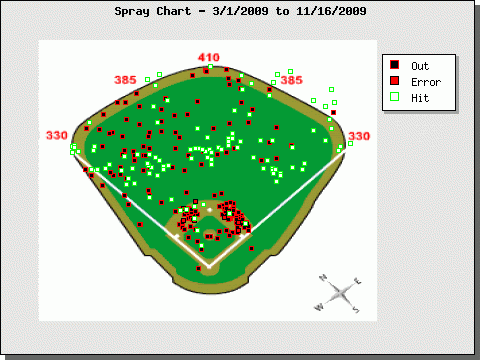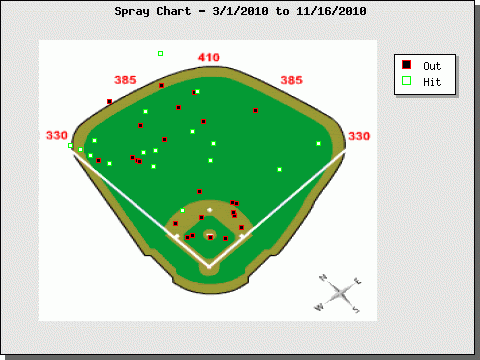The Braves’ Leadoff Situation
I decided to do a little research after watching the Braves lose to the Mets last night in a game in which the Braves’ offense had a) four extra-base hits to the Mets’ two; b) four singles to the Mets’ three; c) four walks to the Mets’ three; and d) five strikeouts to the Mets’ seven. After grounding into three more double plays, the Braves are now second in the Majors in GIDP with 36 on the year. One of the culprits was Yunel Escobar, who I seem to recall GIDP-ing an awful lot. So I looked into it.
I was right. After I read that Escobar grounded into 21 double plays in 2009 and 24 in 2008, which was the highest total in the N.L. for those two years, I decided to examine the batted ball data on Fangraphs, and my findings were telling (click on the link and then click on GB% to sort by that). In 2009 Yunel was one of the most prolific groundball hitters in all of baseball. More than 50% of his balls in play were on the ground, good for 23rd in all of MLB. And he hit the ball on the ground at an even higher rate in 2008.
Here’s the interesting thing: If you look at the folks ahead of him on this list, every single one of them are top-of-the-order hitters for their teams. In fact most of them are leadoff men. It makes sense for Scott Podsednik, Jacoby Ellsbury, Michael Bourn, Elvis Andrus, Denard Span, Emilio Bonifacio, or Carl Crawford to hit the ball on the ground because of their speed. Not only are they attempting to get infield hits, but also if there is a man on base in front of them, there’s very little danger in them grounding into a double play. Bonifacio, for example, only grounded into 5 DP’s all year last year in 509 plate appearances, despite a high GB%. But Yunel Escobar is no burner, and he’s also batting with men on base a whole lot more than those guys due to his position in the batting order.
Yunel has been very successful at the plate the last two years (especially last year), and he may yet improve in his age 27 season. There’s no need to try to change his swing or his approach at the plate just because of the GIDPs. That kind of tinkering is almost always counter-productive. OK, so he hits a ton of groundballs and gets on base a lot, without much power. Perfect, let’s hit him leadoff! Those are precisely the qualities we look for in a leadoff man. If he repeats his .377 OBP from last year while grounding into 25 DP’s and hitting in the 6 or 7 hole in the lineup, it’s such a total waste. The kid has major on-base skills, but not run-producer skills (career slugging%: .416). So, he should hit at the top of the lineup where he’ll get more plate appearances, where him getting on base is a bigger asset, and where he’s less likely to bat with as many runners on base and thus less likely to GIDP. It’s a win-win-win.
If that isn’t a strong enough case to move Escobar up in the batting order in Atlanta, then add this: Nate McLouth has hit .237/.342/.386 in 514 plate appearances as a Brave. And Jordan Schafer, who is the long-term solution in center field for Atlanta barring a major trade, is currently regaining his form in AAA as he comes back from wrist surgery, and isn’t ready to play every day in the big leagues, much less to hit leadoff. Regardless of what the Braves do with CF as the year goes on, it doesn’t appear that their CF will be their leadoff man. So based on that and the aforementioned batted ball data, why not try their shortstop?



